According to curriculum specialist Tracy Edmunds, research shows that when the brain processes words and pictures together, it leads to better recall and transfer of learning. Comics tie together not only words and pictures, but also rich plots, themes, and characters that are sure to capture students’ imaginations.
With their narrative power, it’s easy to see how comics can fit into history and ELA lessons. But what about math, which deals in numbers and formulas rather than stories?
Math and Comics: An Integral Part of the Four Cs
The four Cs—critical thinking, creativity, collaboration, and communication—are necessary skills in every subject and every field—and math is no exception. Students need creativity to come up with a new way to get the right answer, critical thinking to figure out what does and doesn’t work, communication to understand how numbers and sequences work together, and collaboration to work with their classmates to solve problems.
Edutopia discusses how comics can reinforce the four Cs in the classroom:
- Critical thinking: Math is not just about plugging numbers into formulas. Ideally, students should be able to analyze a real-world problem, determine what math concepts or formulas are necessary to solve it, and then find the right answer. Comics help students develop these kinds of critical thinking skills because they teach students not merely to glance at words or pictures on a page and move on. Rather, comics require students to analyze and interpret several elements on the page at once, including the layout of the panels, uses of symbolism, and numerous visual and textual elements.
- Communication: Comics and math are unique in that they both use pictures and words (or graphs and numbers) to communicate a single story. In the real world, numbers don’t matter much unless you’re able to explain to others what they mean. To show students the power of using images to concisely convey an idea, Edutopia suggests having students take a page from their favorite short story or novel and reimagine it as a three-panel comic strip that uses no more than 10 words. If students don’t feel confident drawing by hand, they can use sites like Pixton or Storyboard That.
- Creativity: All great math teachers know that creativity isn’t the sole property of the art or ELA classroom. The best mathematicians are creative thinkers who know how to look at problems from multiple angles to make sure they’re arriving at the correct solutions. Comics are a great way to stimulate creative thinking as students analyze the artwork, story, characters, and themes to understand the message.
- Collaboration: Producing a comic requires a team: a writer, an illustrator, a colorist, a letterer, and a managing editor—at minimum. To exercise students’ collaboration skills, Edutopia recommends putting students in groups to create a comic based on a theme of your choosing. For math class, you might assign students to create a comic explaining the order of operations, how to add or multiply fractions, or any number of other topics you’re tackling in class. This activity not only will activate students’ creative skills, but will also give them a chance to learn from each other.
Comic Books to Use for Math Class
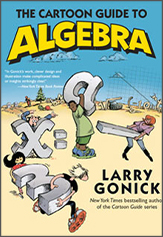
The Cartoon Guide to Algebra uses visuals and humor to teach students the history and how-tos behind the basics of algebra, including practice problems and solutions. Topics include linear equations, polynomials, quadratic equations, graphing techniques, and much more.
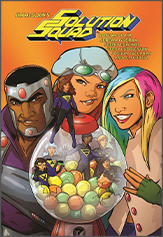
Solution Squad features a team of teenage heroes who get their names (and powers) from different mathematical concepts. In this action-packed adventure, the team solves equations and puzzles to defeat their enemies—and teach their readers valuable lessons in mathematics!
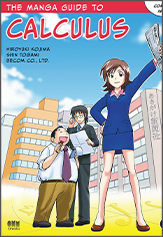
The Manga Guide to Calculus follows junior reporter Noriko as she learns to use calculus to analyze patterns in real-world phenomena, such as probabilities, supply and demand curves, the economics of pollution, and the density of Shochu (a Japanese liquor).
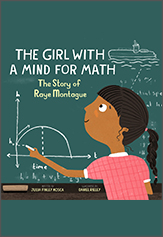
The Girl With a Mind for Math: The Story of Raye Montague tells the story of real-life naval engineer Raye Montague, who overcame sexism and racism to become the first female program manager in the Navy and changed the way we design ships forever.
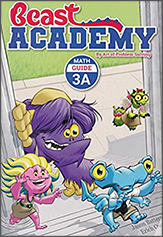
Beast Academy is more than just a comic about monsters attending school and going on colorful adventures; it’s a full curriculum for students age 8–13. Each bundle includes a comprehensive illustrated guidebook and a practice book with hundreds of exercises, puzzles, and games.
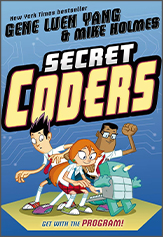
Secret Coders is a series of graphic novels that follow the adventures of Hopper, Eni, and Josh as they solve puzzles and learn basic coding to unfold the mysteries of their quirky school, Stately Academy.
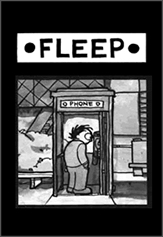
Fleep is a free online comic strip about Jimmy Yee, a man who gets trapped in a phone booth and must use math and physics to escape before he runs out of air.
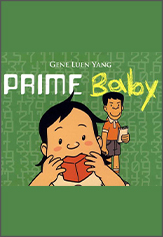
Fleep is a free online comic about a young boy named Thaddeus who notices his new baby sister makes “ga” sounds only in intervals of prime numbers. Naturally, he assumes she is an alien sent to make way for an invasion, and he urgently tries to convince his parents and schoolmates of the truth.
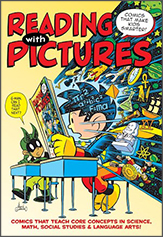
Reading With Pictures is an anthology for students grades 3–6. It includes four math stories, including “Finding Ivy,” which teaches students about Roman numerals, and a printable card game that helps students learn about probability.
Classroom Activities from Jim McClain, Math Comic Writer
Jim McClain is the author of Solution Squad, mentioned in the previous section. For years before turning them into a published graphic novel, McClain used his superhero characters to teach his middle school students about key concepts in math. Here are his tips for making the most of comic books in your math lessons:
- Use characters to embody math concepts. Mathematics has a fairly extensive vocabulary that students don’t encounter often in their daily lives outside of math class. That’s why McClain uses math terms for character names: to help students get familiar with the word and something about its meaning based on the character’s powers—all without realizing they’re learning about math.
You don’t have to be an artist or even use the Solution Squad in your class to take advantage of this idea. Instead, after introducing a new vocabulary term, you might take a couple of minutes to have your students brainstorm what kinds of powers the math concept might have if it were a superhero. This activity will spark your students’ creativity, and they’ll be much more likely to remember the vocabulary word long-term.
- Read together. Who ever thought you’d be doing read-alouds in math class? Comics are actually a great introductory activity when you’re beginning a new topic. McClain suggests using a SMART board or projector on a whiteboard so the whole class can read along together. You can assign different characters to different students, and students will have a blast discussing the story and characters. You can then pivot to talking about the math concepts you saw in the story and refer back to the comic to reinforce important ideas.
- Use subliminal visuals. Especially when it comes to geometry and graphing, math involves shapes as much as numbers. However, when learning about coordinates or the shape of a parabola or the difference between an isosceles and scalene triangle for the first time, students can have a tough time memorizing rote facts about these concepts. That’s why McClain suggests introducing these shapes as part of a story first, and then pointing out the math concepts they represent later on.

For example, in his comic, McClain introduces a brother and sister team known as The Ordered Pair. The firstborn, Abscissa (also called Xiao), is a speedster who runs horizontally, and the second born, Ordinate (or Yao), flies and dives vertically. McClain lets his students get to know these characters and their powers before introducing the basics of graphing coordinates: namely, that you graph x (horizontal) first, and then y (vertical). Because students already have strong associations with the fictional characters, they’ll have an easier time remembering the mathematical concepts they represent.






